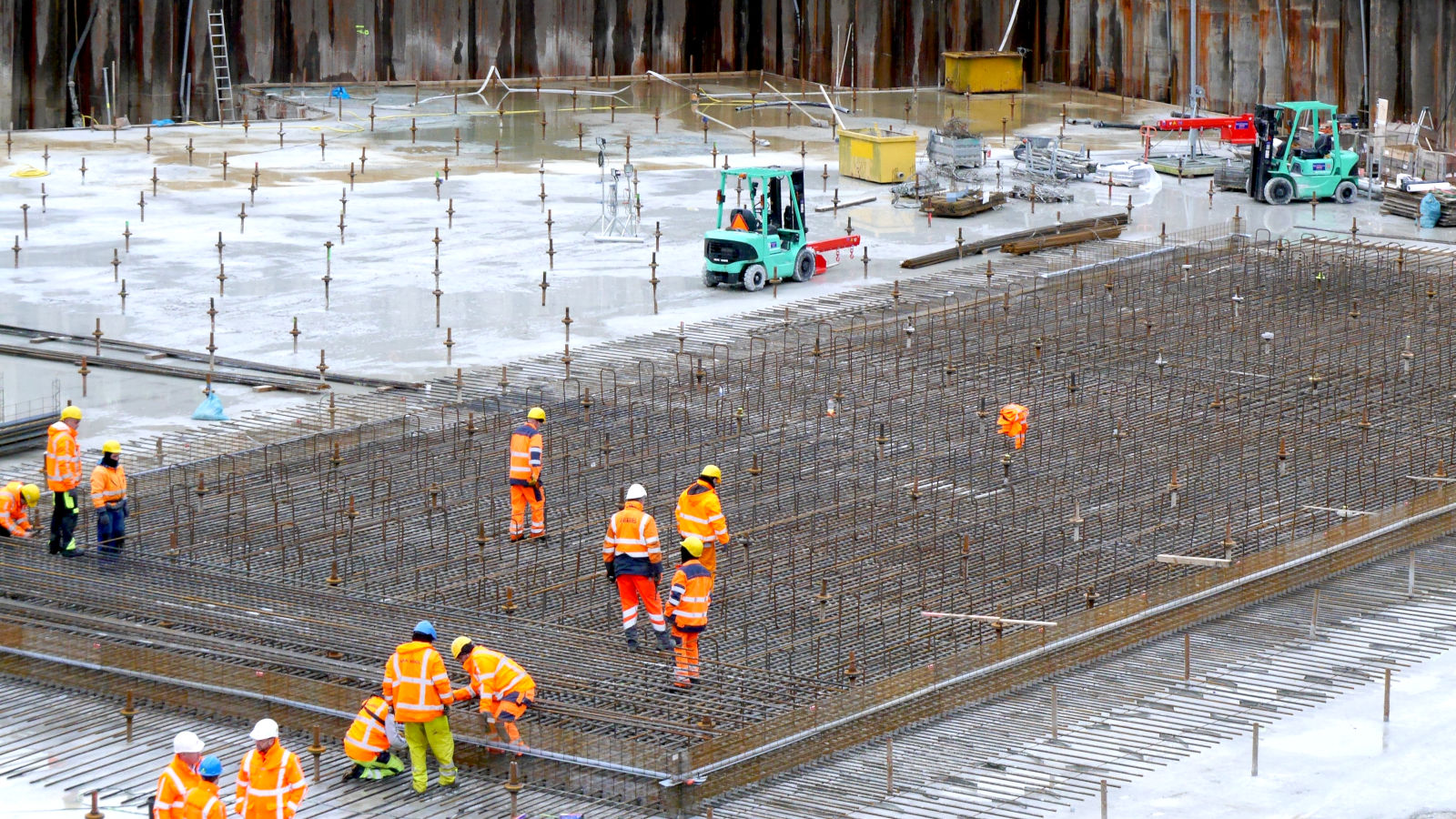
The Russian invasion of Ukraine, supply-chain disruptions due to the pandemic, and tight labour markets have raised questions about the ability of the European construction sector to continue business-as-usual. The ambition levels in Europe, however, are not business-as-usual. Due to policy initiatives such as the EU’s ‘Fit for 55’ package, the response to geopolitical shifts, and persistent housing shortages ambition levels for the construction sector are reaching new heights. Ambitions concerning housing construction, energy efficiency, and an overhaul of Europe’s energy infrastructure all call for significant capacity on the part of the construction sector. The question has been raised about whether the Dutch construction sector can realise the ambitions that the Dutch government has set.
The Dutch government has two main aims for construction; to build 900.000 new dwellings and to decouple 1.500.000 existing dwellings from the natural gas network by 2030. The EIB’s most recent projections for 2030 expect just under 750.000 houses to be realised, and 500.000 to be decoupled from the gas network. A large increase in construction capacity must be realised on short notice if these goals are to be met. There is no lack of willingness on the part of the government to fund its ambitions, so the EIB has chosen to consider what is required in terms of production output and labour input, as well as how material shortages could factor into the equation.
In 2021 Dutch construction output amounted to € 82 billion. EIB calculations show that adding the government ambitions to existing forecasts in which factors such as the energy transition already increase production levels will result in € 110 billion in output by 2030, up from € 96 billion in the basic forecast. To realise this increase, the size of the labour force in the construction sector will have to grow from around 470.000 ft in 2021 to 550.000 ft in 2030. In addition to this, yearly productivity increases of around 1,6% per cent are required. While it is a challenge, the EIB believes this to be possible without a major break from previous trends.
“‘Production output will have to increase sharply in the coming years to meet the targets.”
The biggest challenge exists in the short term: around 30.000 new employees must be drawn into the construction sector in 2022 and 2023. This is because a fast increase in capacity levels is needed to meet the set targets. These figures include replacements for the circa 10.000 employees that flow out of the sector yearly. These employees can be drawn from three sources: schools, abroad, and other sectors. To realise the set targets the construction sector will need to draw enough people from these groups in the tight labour market that exists in the Netherlands today.
Vocational schools are the most important source of new employees in the construction sector. After a significant drop in the number of students learning to work in construction between 2008 and 2014, there has been a steady rise in their numbers. It can be expected that this will result in a yearly inflow of over 12.000 employees into the construction sector in the coming decade. While this provides a large amount of the needed employees in the period through 2030, the higher demand for labour in the short term will require inflow from other sources as well.
The most uncertain of these are labourers from abroad. Before the pandemic, the number of foreign labourers working in the Dutch construction sector increased by around 4.000 per year. 2020 and 2021 saw a net outflow of 5.000 of these labourers as the pandemic imposed strong restrictions on movement across borders. Signs show that these workers are returning, resulting in an expected ‘correction’ and an inflow of 7.500 foreign labourers in both 2022 and 2023, after which a return to pre-pandemic levels is expected. Economic developments across Europe and the effect of the war in Ukraine will play a role in shaping this outcome.
“‘The inflow of workers from educational institutions is expected to remain fairly stable.”
ABOUT THE AUTHOR
Arend Olthoff
EIB - Economic Institute for Construction and Housing
In the scenario laid out an annual rise in productivity of 1,6% is required. This is in line with productivity growth over the past two decades in the Dutch construction sector. Material shortages are a further relevant factor. Supply chain issues, worsened by the invasion of Ukraine and sanctions implemented in response, create upward price pressure. Without factoring in second-order effects, the current increases in the price of materials amount to a 5% increase in total construction costs. The EIB believes that while the upwards price pressure and issues with logistics can hamper production, companies are ultimately able to work around this. Historically, price increases in materials have been a reason to use what is available more efficiently and to search for alternatives where possible.
Finally, it is important to consider what can be done to reduce pressure on the supply side. For example, by decreasing the complexity of projects for new housing, which are currently concentrated in heavily urbanised areas that impose constraints on logistics and can cause pushback from inhabitants, the need for extra labour can be reduced. All in all, however, the EIB believes the targets set out by the Dutch government can be met. While certainly ambitious, it is by no means unrealistic and can be met with an effort to attract more workers and a bit of creativity.
ABOUT THE AUTHOR
Arend Olthoff
EIB - Economic Institute for Construction and Housing
